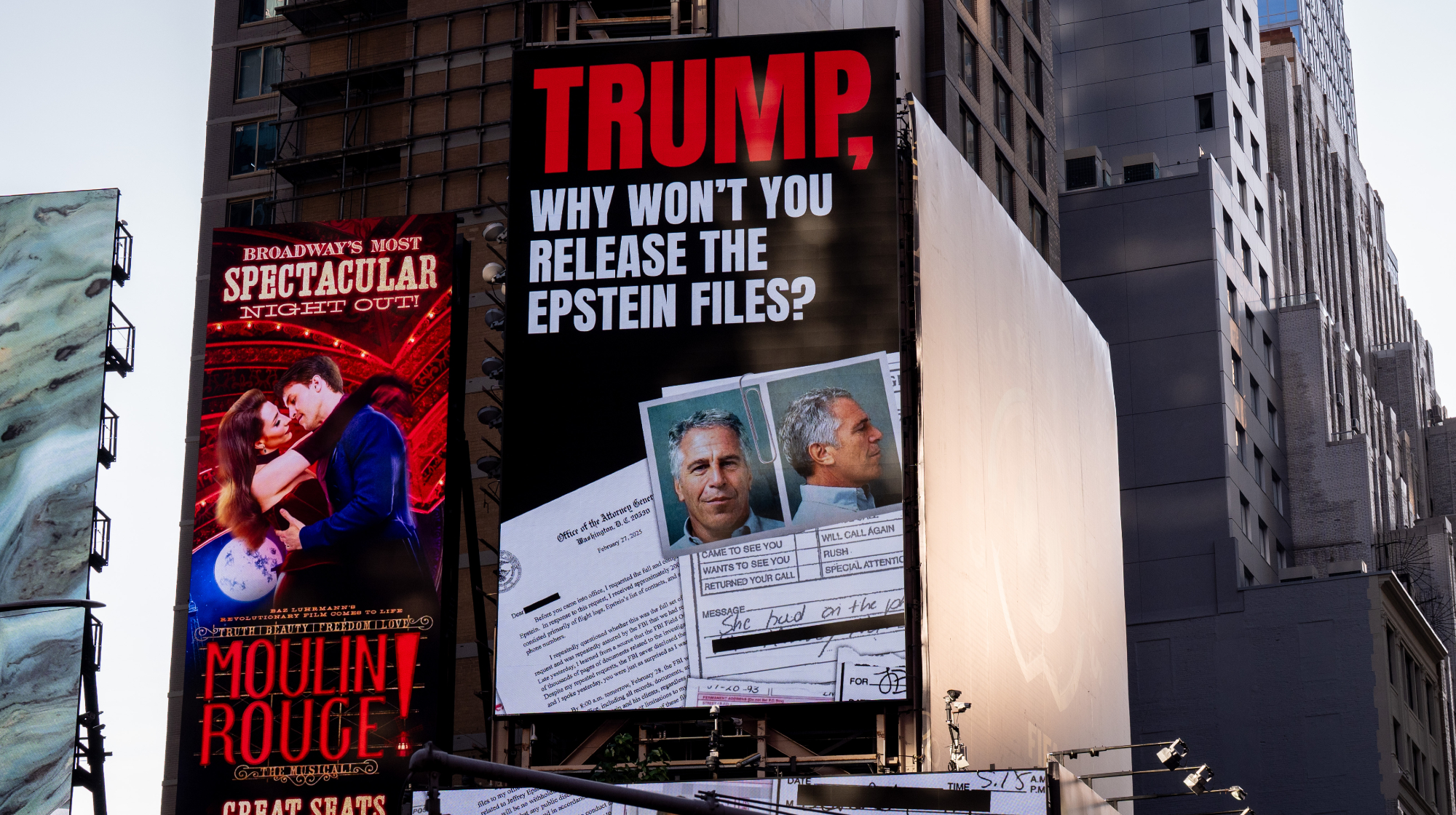Corporate debt is a ticking time bomb
America's corporate debt looks ready to blow


America's economic expansion is now old enough that people are wondering what will cause the next bust. There are no obvious culprits. But one suspect skulking in the shadows arguably deserves more attention than it's getting: the rise of corporate borrowing.
Simply put, American companies have taken on a record-breaking $6.3 trillion of debt.
The previous peak for total corporate debt was 45 percent of GDP in 2008. U.S. companies passed that threshold in March of this year.
Subscribe to The Week
Escape your echo chamber. Get the facts behind the news, plus analysis from multiple perspectives.

Sign up for The Week's Free Newsletters
From our morning news briefing to a weekly Good News Newsletter, get the best of The Week delivered directly to your inbox.
From our morning news briefing to a weekly Good News Newsletter, get the best of The Week delivered directly to your inbox.
The conventional wisdom from financial analysts is that this peak isn't like the last one. Interest rates stood at 5.25 percent going into the Great Recession, but are only around 1.9 percent today. And the Federal Reserve has been raising them very slowly. That makes the debt load easier to finance than it was in 2008, despite its bigger size.
"The red flags are not going up yet because to a large extent the level of interest rate is actually quite benign," Francesco Curto, a head researcher at Deutsche Bank's asset management arm, told CNBC in June. "So I wouldn't say there are major concerns there."
But dig beneath the surface, and things don't look so good. "The more leveraged [firms] are, the less resilient they are to shocks and turbulence in the economy," Gregg Gelzinis, a research associate who focuses on finance at the left-leaning Center for American Progress, told The Week. "And it's always tough to predict what that specific shock will be and when it will occur."
Gelzinis pointed to several aspects of the corporate debt load that make it riskier than it first appears.
A free daily email with the biggest news stories of the day – and the best features from TheWeek.com
First, the overall portion of corporate debt that's high risk is larger now than it was at the last peak. Since 2007, safe, highly-rated corporate debt has actually fallen by roughly $1 trillion. Medium-rated debt skyrocketed over the same period, by almost $3 trillion. Riskier high-yield debt remains lower than these two categories, but also steadily grew between then and now.
But there's also leveraged loans — basically, loans taken on by businesses that already have a lot of debt on their books. They aren't always counted together with standard high-yield debt. But leveraged loans are also quite risky, and they've doubled since 2010. Leveraged loans combined with high-yield debt make up a whopping 37 percent of all corporate debt.
Meanwhile, available cash stockpiles are concentrated among the top 1 percent of companies. There's a wide swath of riskier companies who now have $1 in cash for every $8 in debt, a record low (yes, worse than 2008). But the cash hoarders at the top skew the average cash-to-debt ratio for all companies, making it look less risky than it is. And the problem's getting worse.
The terms of that debt are also deteriorating. Creditors are sacrificing various safeguards, particularly their priority in being repaid should the business go belly-up, all for the chance to hand out more high-yield loans. Collectively, those standards have gotten progressively worse in the last few years. That means ripple effects across the financial system will be worse if there is a big wave of corporate defaults.
Riskier corporate loans are also being repackaged in collateralized loan obligations that then sell as lower risk instruments to investors. The problem isn't anywhere as severe as the repackaging of mortgages in the housing crisis. But the similarities are obviously unnerving. And the practice is spreading.
Gelzinis emphasized that all this is happening amidst a broader turn towards banking deregulation. Congress and President Trump recently passed a partial rollback of Dodd-Frank's stricter financial rules. Under the White House's leadership, other regulators like the Federal Reserve and the Office of the Comptroller of the Currency have loosened stress testing and capital requirements and other safeguards. Again, this just increases the chance of wider contagion should lots of companies go broke.
Just to add insult to injury is why this debt buildup is happening. Ostensibly, the reason companies borrow is to finance expansions. Yet business investment in the economy fell over the same period that borrowing increased, and is now at astonishing lows. But even as the correlation between borrowing and investment broke down, the correlation between borrowing and payouts to shareholders tightened up considerably. Part of the reason is dividends. But an even bigger part is share buybacks, which were deregulated in 1980 and have now grown to epic proportions.
In other words, corporations aren't just depressing wages and investment in order to send more cash to shareholders. They're literally borrowing more, and making their collective financial positions even riskier, to further feed the payout binge. As William Lazonick, an economics professor at the University of Massachusetts Lowell, told The Week, the small number of corporations with good debt positions gorge on buybacks. That sets shareholder expectations and puts pressure on the wider world of less well-positioned companies to keep up.
So what could set off this corporate debt bomb?
A sudden inflation spike could make the Fed panic and raise interest rates faster. Trade wars, like the one Trump is starting, can also cause inflationary pressure by raising import prices. Some unforeseen shock could hit unexpectedly as well.
But even at its current pace, the Fed should get back to 5 percent interest rates around 2022. Two pretty big waves of riskier corporate debt will come due in 2021 and 2022, and another one just before 2025. "For the most part, these companies aren't going to have the cash on hand to pay off the loans," Gelzinis said. They'll have to refinance, at a significantly higher interest rate. If they miscalculate, that could set off a whole wave of corporate defaults.
Between the spread of riskier corporate debt, the effect of defaults on the financial system, and how many American households are still dealing with lots of debt and depressed wages, the cascade effect throughout the economy as a whole could be big. "That's where I see the vulnerability," Lazonick said. "A whole set of institutions and practices that allow income to be concentrated at the top."
Lowering the threat won't just require tougher regulations. It will require making the payouts less attractive, probably through higher taxes on the wealthy and corporations. And it will require drastic reforms of corporate governance, so that companies stop cannibalizing themselves for the sake of shareholders, and get back to actually investing in jobs and the economy.
Jeff Spross was the economics and business correspondent at TheWeek.com. He was previously a reporter at ThinkProgress.
-
 NFL gets ESPN stake in deal with Disney
NFL gets ESPN stake in deal with DisneySpeed Read The deal gives the NFL a 10% stake in Disney's ESPN sports empire and gives ESPN ownership of NFL Network
-
 House committee subpoenas Epstein files
House committee subpoenas Epstein filesSpeed Read The House Oversight Committee has issued a subpoena to the Justice Department for its Jeffrey Epstein files with an Aug. 19 deadline
-
 'America is becoming a nation of homebodies'
'America is becoming a nation of homebodies'Instant Opinion Opinion, comment and editorials of the day
